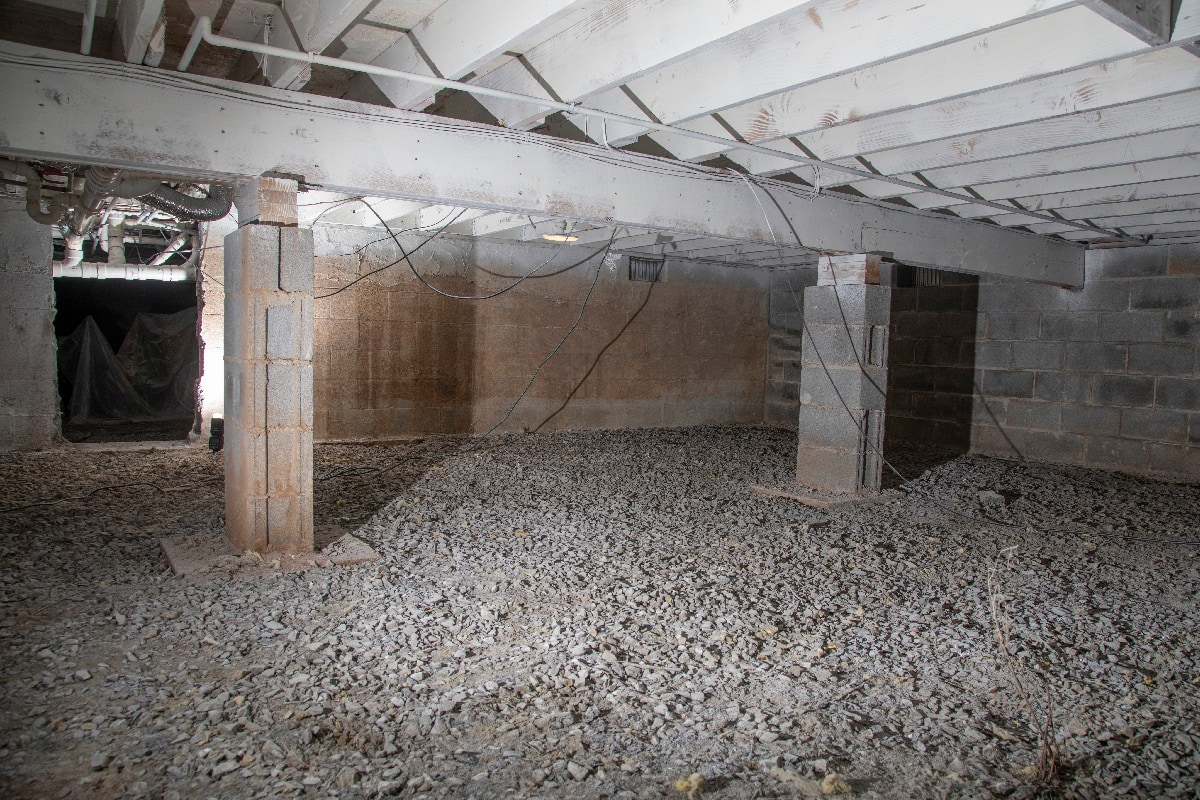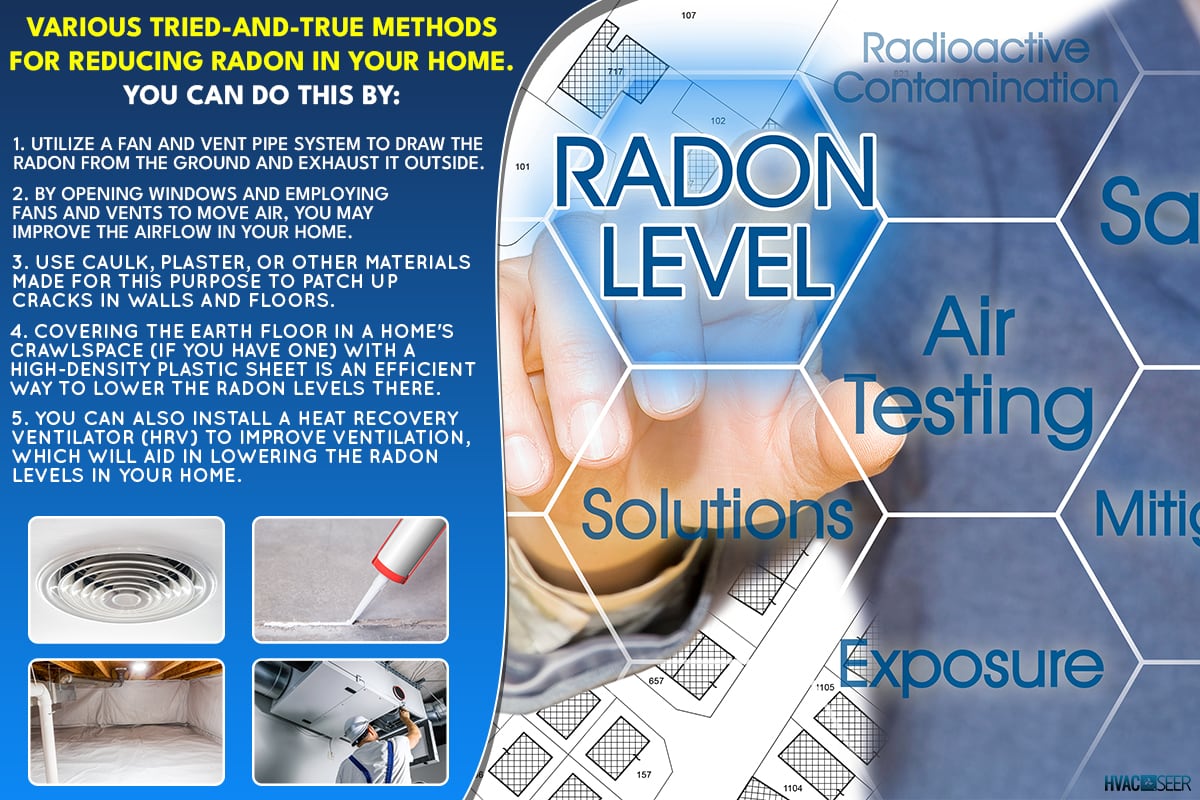We all know that radon is dangerous. Your health is at risk from radon because it is radioactive. So, you may wonder, what is the safety threshold value of this gas in your home, including your basement? We researched this query, and here is what we discovered.
4 pCi/L or higher concentrations are regarded as dangerous. If the level of your home (all parts) exceeds this threshold value, the Environmental Protection Agency (EPA)recommends fixing the problem immediately. Although it is challenging to lower levels below 2 pCi/L, low radon levels are nonetheless of concern and are frequently attainable reduction targets.
Since there is no known safe limit for radon exposure, the EPA also advises Americans to test the radon levels in their homes, which should be between 2 and 4 pCi/L.
Keep reading as we give you tips for lowering the radon levels in your house. We'll also discuss why it is critical to control the radon levels of your home and the dangers of having high radon levels in your home. Additionally, we'll talk about how radon enters your home and in what ways you can test your home.
Why Is It Important To Monitor Radon Levels In Your Home?
According to the World Health Organization (WHO), lung cancer is primarily brought on by radon. Based on the national average radon level and the incidence of smoking, radon is thought to be responsible for anywhere from 3% to 14% of all lung cancer cases in a nation.
Although indoor workplaces may potentially be a source of exposure, for the majority of people, the greatest radon exposure happens in the house where they spend most of their time.
What Are The Health Risks Of Elevated Radon Levels?

Breathing indoor radon over extended periods can pose a serious health risk to families. So, how does breathing radon cause lung cancer? Here is how:
- Radiation from radon can enter your lungs when you breathe it in and become stuck there.
- Lung cancer risk rises over time as a result of the harm these radioactive particles do. Before health issues manifest, years may pass.
Each year, lung cancer claims more lives than all other malignancies combined, including colon, prostate, ovarian, and breast. If you smoke or use fuels that produce more indoor particles and your household has high radon levels, you run a higher chance of getting lung cancer.
Scientists are aware of the health problems that radon poses to adults, but they are still learning about the threats it poses to children's health. Children's breathing rates are faster than adults because of their smaller bodies.
As a result, youngsters are exposed to more radon and have more chances to breathe it in. In addition to receiving a larger radon dose, children also have smaller lungs, which are susceptible to damage far more quickly than those of an adult.
How Do You Know The Radon Levels In Your Home?
Whether your home is new or old, or where it is, doesn't matter. You cannot sense radon since it has no flavor, no smell, and no color. Testing is the only way to determine whether your home has an issue.
You can either perform the testing yourself using a kit that you send back to a lab for examination, or you can pay a specialist to perform the testing for you. A DIY kit might work if you're prepared to read and follow the directions.
The majority of radon air test kits come in the form of little bottles or canisters that you open for 2 to 7 days before sealing and returning to the lab. Follow the test's instructions exactly if you want accurate results.
Here are some tips to ensure the success of your testing:
- Try to test during the cool months when your heat is on. Before starting, keep all doors and windows closed for 12 hours.
- Then, during the test, except for routine coming and leaving, keep the windows and doors closed.
- Put the containers in the lowest habitable part of the house, which is typically the basement.
- Lastly, send the bottles and canisters back to the lab by mail after the test period has ended using the accompanying envelope.
Types Of Radon Testing

Here are some of the testing methods to know the radon levels of your home:
- Short-term tests are useful to determine whether more testing is necessary. Most assess radon levels for 2-7 days using electret ions or activated charcoal. You can get short-term test kits at hardware stores, home centers, and online vendors.
Click here for this product on Amazon.
- Long-term tests track levels for 90 to 365 days. This is a more accurate representation of your home's typical annual levels, which can differ dramatically from day to day and month to month depending on variables including air pressure changes, strong winds, fluctuating soil moisture, and snow cover that trap radon gases. State radon organizations and online businesses both offer long-term radon tests.
- The continuous test uses plug-in continuous electric monitors with ordinary outlets. You can get a running average from these monitors, which can be utilized for both short- and long-term testing. Continuous air samples are taken using an ionization chamber.
Where Is The Best Location To Place Your Radon Test Kit?
Test in your home's basement, if you have one, which is the lowest livable level. Pick a space you use frequently. Avoid carrying out tests in crawl spaces, utility rooms, or laundry rooms.
Additionally, place your test kit at least three feet away from outside doors, windows, and other openings in the walls or floor of the foundation, a minimum of 20 inches above the ground, preferably 3-6 feet above the floor, and a minimum of 4 inches from other objects and at least 12 inches from outside walls.
What Should You Do When The Radon Test Results Come Out?
Here is what you need to do based on the results of your radon test:
For Radon Level > 4 pCi/L
If you performed a short-term test, conduct another test utilizing a long- or short-term test. Calculate the average of the two findings if you conduct a second short-term test. If the result of either test is greater than 4 pCi/L, or if you want to build a radon reduction system, get in touch with a qualified professional.
Radon Levels Between 2 and 4 pCi/L
When you get this result, think about putting up a radon reduction system. Ensure to retest a few months after making repairs to your home to determine whether radon levels have decreased.
Below 2 pCi/L Radon Level
You don't have to do anything. However, if you begin residing on a lower floor (like your basement), test your home once more.
How Does Radon Enter Your Home?

Radon results from the uranium, which is present in almost all soils, naturally decaying. It usually enters your home through cracks and other flaws in the foundation as it rises through the ground to the air above. Radon specifically enters homes through plumbing penetrations, sump holes, suspended floors, building joints, basement wall cracks, foundation fissures, and even tiny holes.
Radon is trapped within your house, where it can accumulate. Any house could have a radon issue. This includes both new and vintage homes, airtight and drafty homes, as well as homes with and without basements.
How to Lower Your Home's Radon Level

High radon levels must be reduced, which calls for specialized expertise and training. To find a competent specialist to remedy your house, get in touch with your state's radon office or one of the EPA's national radon proficiency programs.
There are various tried-and-true ways to lower radon in your house. You can do this by:
- Utilize a fan and vent pipe system to draw the radon from the ground and exhaust it outside.
Click here for this radon fan on Amazon.
- By opening windows and employing fans and vents to move air, you may improve the airflow in your home. Although, you shouldn't treat natural ventilation in any type of home to be a radon mitigation method.
- Use caulk, plaster, or other materials made for this purpose to patch up cracks in walls and floors.
- Covering the earth floor in a home's crawlspace (if you have one) with a high-density plastic sheet is an efficient way to lower the radon levels there.
- You can also install a heat recovery ventilator (HRV) to improve ventilation, which will aid in lowering the radon levels in your home. By taking in outside air and using the warmed or chilled air being vented to temper the entering air, an HRV will promote ventilation.
Test your home once more to ensure that the radon reduction system is in place and think about retesting it every two years to ensure that radon levels stay low. Retest your house after any renovations, too.
In Summary
![Radon remediation fan for home, DIY Radon Mitigation Mistakes To Avoid [Read This First]!](https://hvacseer.com/wp-content/uploads/2022/10/Radon-remediation-fan-for-home.jpg)
There is no safe level when it comes to radon. Although the EPA states that levels between 2 and 4 pCi/L are tolerable, you should still consider having a radon mitigation system. Moreover, if the radon level of your house is greater than 4 pCi/L, you should immediately take action to reduce it.
Controlling and monitoring the radon level in your home, including your basement, should be a top priority. This is to avoid the possible health risks of radon exposure.
Before you go, you can check these related articles:


